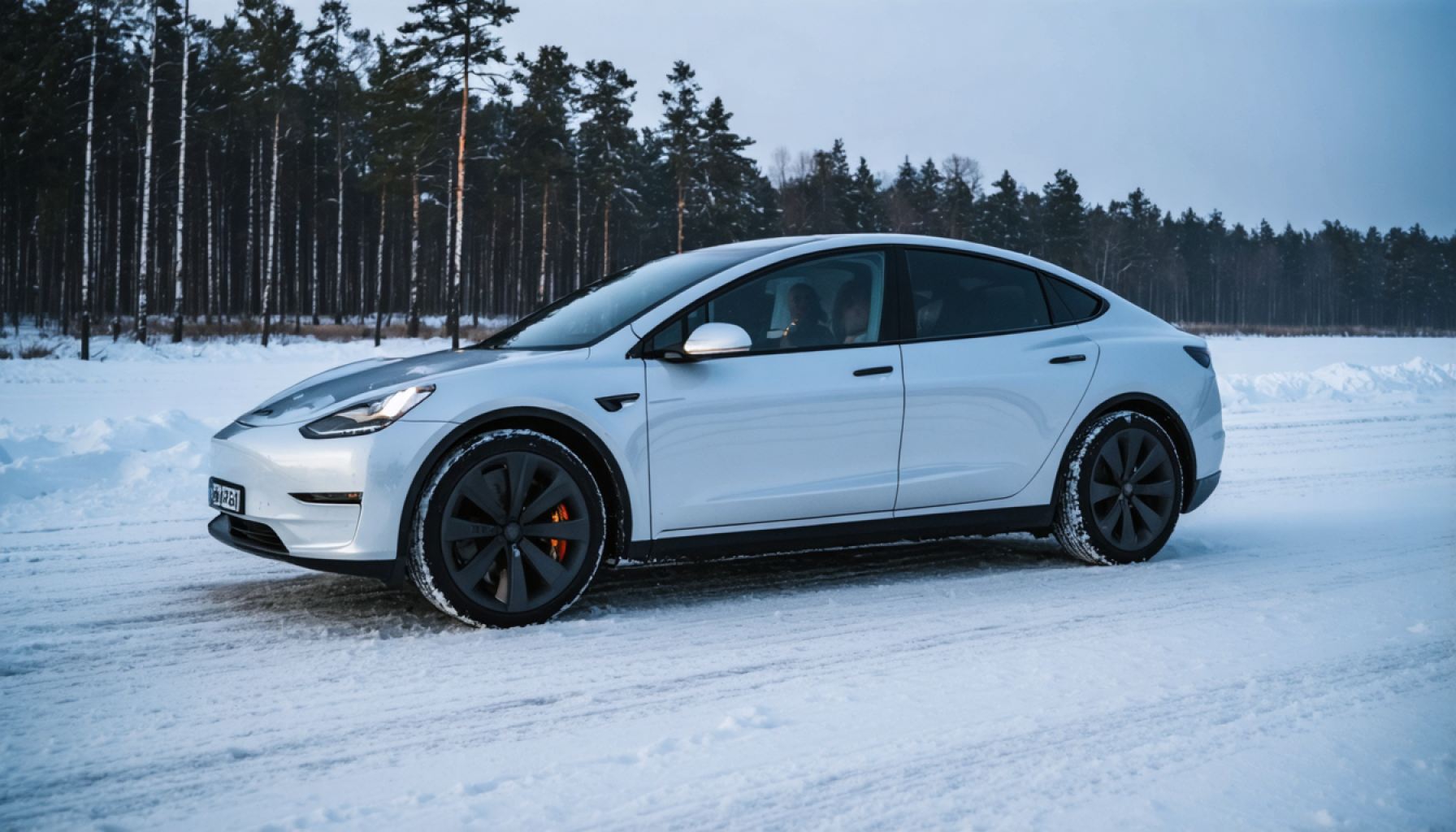- Russia aims to expand its electric vehicle (EV) infrastructure with at least 5% of parking spots in new developments dedicated to EVs and hybrids.
- The government plans to develop 20,000 new charging stations by 2030, supported by a $10.5 billion investment.
- Moscow and Saint Petersburg are key areas for charging station growth, offering up to 11-kilowatt charging capacity.
- Despite challenges like vast geography and reliance on oil and gas, initiatives such as tax cuts and purchase incentives aim to boost EV adoption.
- Russia’s EV market faces hurdles like high prices due to reliance on Chinese components and low sales figures.
- The country envisions a greener future with government fleets and public transport adopting electric solutions.
- Russia’s shift to electric vehicles represents a strategic move to embrace sustainability amidst global trends.
A wintry landscape marks the backdrop of Russia’s audacious step into the sphere of electric vehicles (EVs). Despite the chilling winds of challenge, the Ministry of Construction has envisioned a future where city planners meticulously reserve parking spaces designated for EVs within new residential developments. Like a painter starting with a blank canvas, developers are encouraged to carve out at least 5% of parking spots for electric and hybrid cars, ensuring no less than one dedicated spot per building—a small but significant brushstroke on a much larger masterpiece.
The Russian government’s dance into the realm of electrification is not a fleeting waltz but a calculated march, aiming to bolster the infrastructure supporting this green transition. Charging stations are sprouting up, particularly in metropolitan centers like Moscow and Saint Petersburg, with the power to electrify up to 11 kilowatts ensuring not just a charge, but a promise of continuity for the urban EV journey.
This push towards electrification is not new. The Russian state had previously set in motion subsidies to build charging infrastructures, alongside plans to exponentially increase the number of charging stations by 2030. An investment of a staggering $10.5 billion is poised to fuel the development of 20,000 new charging points with an eye towards one and a half million electric cars cruising the Russian roads by the decade’s end. It’s a promise to redefine efficiency while embracing an already potent electric tide.
However, the story is far from simple. A country steeped in a legacy of gas and oil, Russia faces an uphill battle riddled with economic and geographic obstacles. The enormity of the land, coupled with its fragmented population density, poses significant challenges in creating a uniform EV infrastructure. It’s a contrast to the burgeoning EV market of China, where electric delights are sold in staggering numbers each month.
Yet, bold initiatives like tax cuts, toll exemptions, and purchase incentives paint an optimistic picture. The future could see government fleets and public transport turn green, marking a renaissance for eco-friendly travel. But with significant imports relying on Chinese components, Russian EVs tend to be expensive, limiting widespread consumer adoption.
Even as sales figures stutter— a February slump with only 617 new electric vehicles sold, a sharp plunge from the previous year’s numbers—the potential for momentum exists. It’s the cradle of a movement that promises to change the automotive landscape, should the pieces fall into place.
The icy Russian terrain, both literal and metaphorical, serves as a symbol of the challenges ahead. Yet, within this frost lies a seed of potential, a glimpse of a country gearing up to rewrite its energy narrative amidst global shifts toward sustainability. Can Russia charge past these barriers? Only time, and strategic innovation, will tell.
Russia’s Electric Vehicle Revolution: Can It Overcome the Icy Terrain?
Overview
Russia is embarking on an ambitious journey to revolutionize its transportation sector through the adoption of electric vehicles (EVs). Despite the challenging geographical and economic landscape, the Russian government is pushing forward with a plan to integrate EV infrastructure across the country. This includes mandating EV parking spaces and boosting charging station development in major cities like Moscow and Saint Petersburg.
How-To Steps & Life Hacks: Preparing for EV Adoption in Russia
1. Research Government Incentives: Potential EV buyers in Russia should explore available government incentives such as tax cuts and purchase rebates.
2. Identify Charging Stations: When considering an EV, check for nearby 11 kW charging stations and plan routes accordingly to avoid inconvenience.
3. Hybrid Options: Given the limited EV infrastructure, consider hybrid vehicles as a transitional option that reduces dependency on charging networks.
4. Stay Informed on Developments: Keep an eye on government announcements regarding new charging points and incentives to make the most of the evolving EV landscape.
Industry Trends and Predictions
– Market Growth: Despite current limitations, Russia aims to have 1.5 million electric cars by 2030, indicating significant market potential.
– Investment Surge: A $10.5 billion investment targets the creation of 20,000 new charging points, which is crucial for supporting widespread EV adoption.
– Green Public Transport: Future plans could see public transportation fleets transitioning to electric, enhancing eco-friendly travel options.
Controversies & Limitations
– Economic Dependence on Oil: Russia’s economy has historically relied on oil and gas, making the shift to clean energy a challenging but necessary evolution.
– Geographical Challenges: The vastness and low population density of Russia make building a cohesive EV infrastructure daunting.
– High Costs: With EV components largely imported from China, costs remain high, limiting accessibility for the average consumer.
Comparisons with the Global EV Market
– China vs. Russia: China leads globally with robust EV sales each month, while Russia is still grappling with initial integration challenges.
– European Policies: Compared to Europe’s aggressive green policies, Russia is slowly catching up by implementing strategic subsidies and infrastructure projects.
Insights & Predictions
– Gradual Adoption: While the initial adoption rates are slow, awareness and infrastructure improvements could accelerate EV uptake within the decade.
– Potential for Innovation: Strategic innovation and partnerships with global EV leaders could help Russia overcome its current limitations and establish itself as a competitive player in the green transition.
Actionable Recommendations
1. Diversify EV Selection: Manufacturers should focus on introducing affordable, locally produced models to cater to the Russian market.
2. Enhance Charging Infrastructure: Prioritize rural and semi-urban areas to create a more uniform charging station network.
3. Educate Consumers: Launch public awareness campaigns to highlight the benefits of EV ownership and demystify charging and maintenance processes.
4. Explore Renewable Energy: Invest in renewable energy sources to power the growing EV infrastructure sustainably.
Russia’s journey into electric vehicle territory is fraught with challenges, but with strategic planning and innovation, it holds the potential to significantly reduce its carbon footprint and pave the way for a greener future.
For more insights, visit Tesla.


















